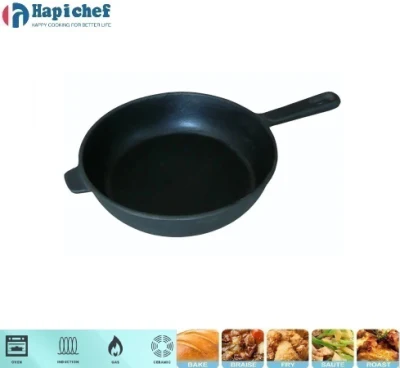How to Properly Season a Cast Iron Pan in the Oven at Home
Seasoning Cast Iron Pans A Comprehensive Guide to Factory Techniques
Cast iron pans have been a staple in kitchens for centuries, celebrated for their durability and exceptional heat retention. One of the key factors in maintaining these culinary workhorses is the process of seasoning. Seasoning not only enhances the performance of the pan but also creates a natural, non-stick surface that improves with time and use. While many home cooks season their cast iron pans themselves, factory techniques offer a fascinating glimpse into the best practices that can be applied at home. This article explores the process of seasoning cast iron pans in a factory setting, detailing the steps and the benefits of this time-honored tradition.
What is Seasoning?
Seasoning refers to the process of applying oil to the surface of cast iron and heating it to create a polymerized layer that protects the metal and enhances its cooking properties. This layer is crucial for preventing rust, enhancing food release, and providing flavor to dishes. In a factory setting, seasoning is often carried out in batches, utilizing industrial ovens designed for consistency and efficiency.
The Factory Process
The factory seasoning process begins with the preparation of the cast iron cookware. Freshly cast pans, which may still have traces of manufacturing residues, are thoroughly cleaned and inspected. This initial step is critical; any leftover substances from the casting process—such as dust or oils—must be removed to ensure that the seasoning adheres properly.
Once cleaned, the pans are preheated in large industrial ovens to facilitate the application of oil. Typical oils used in seasoning include vegetable oils, grapeseed oil, and flaxseed oil, each chosen for their high smoke points and ability to polymerize under heat. The preheating process ensures that any moisture is evaporated, allowing the oil to bond effectively with the iron.
Oil Application
In a factory, the oil can be applied using several methods. The most common approach involves spraying a fine mist of oil onto the surface of each pan. This method ensures an even distribution, which is vital for achieving a uniform seasoning layer. Some factories may also use brushes or cloths to apply the oil, particularly for more intricate cookware designs.
After the oil has been applied, the pans are placed back into the preheated ovens. The temperature settings are crucial—typically between 450°F to 500°F (232°C to 260°C). The pans are left in the oven for a set period, usually around one hour. This heating process allows the oil to undergo a chemical reaction, forming a hard, protective coating.
Cooling and Quality Control
season cast iron pan in oven factory

Once the seasoning process is complete, the pans are carefully removed from the oven and allowed to cool. Cooling is as important as heating, as it helps solidify the seasoned layer. After cooling, each pan undergoes a thorough quality control inspection. Any defects or inconsistencies are addressed before the pans are packaged for sale.
Benefits of Factory Seasoning Techniques
1. Consistency Industrial ovens provide uniform heat distribution, ensuring that every pan receives the same treatment. This leads to a consistent seasoning layer that performs equally well across all pieces.
2. Efficiency Factory processes allow for the seasoning of multiple pans at once, significantly reducing the time it takes for manufacturers to prepare cookware for the market.
3. Quality Assurance With rigorous testing and quality control measures, factory-seasoned pans often guarantee a high standard of durability and performance.
Tips for Home Cooks
For home cooks looking to replicate factory seasoning methods, several key tips can enhance the seasoning process
- Clean thoroughly Before seasoning, ensure that your pan is free of any residues from previous cooking attempts. - Use a high smoke point oil Choose oils that can withstand high temperatures for better results. - Apply in thin layers A thin layer of oil will polymerize more effectively than a thick one. - Heat gradually Avoid shocking the pan with drastic temperature changes.
Conclusion
In mastering the process of seasoning cast iron pans, both factory techniques and home methods provide valuable insights. By understanding the importance of this practice, cooks can prolong the life of their pans, enhance their culinary experience, and pay homage to a time-honored tradition that continues to stand the test of time. Whether at a factory or in a cozy home kitchen, the care put into seasoning cast iron reflects a lasting commitment to quality and craftsmanship.
-
Why Every Kitchen Needs a Casserole Cast Iron DishNewsJun.24,2025
-
Experience the Tradition and Quality of Cast Iron CookwareNewsJun.24,2025
-
Double Sided Cast Iron Grill PanNewsJun.24,2025
-
Cast Iron Dutch Ovens You’ll Actually UseNewsJun.24,2025
-
Buy Cast Iron Griddle for Everyday CookingNewsJun.24,2025
-
Barbecue Iron Grill Cooking PowerNewsJun.24,2025
-
Standard Product Lines from Cast Iron Cookware SuppliersNewsJun.11,2025
